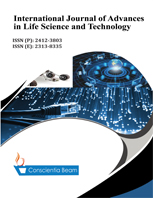Rheoencephalography: Past Popularity, Obvilion at Present and Optimistic Furure
DOI:
https://doi.org/10.18488/journal.72/2015.2.1/72.1.1.15Abstract
The reoencephalographic method (REG) has been known for a number of decades. The history of this method includes loss of its popularity, years of oblivion and a second wave of recognition. Such a tumultuous history is common for methods based on physical principles, such as capacitance and resistance, when applied to physiology and medicine prior to serious preliminary investigations to establish indices for living tissues common to natural subjects. In this case because blood characterize by comparatively low electrical resistance it was concluded that the volume of blood and its circulatory processes could be monitored by this method. In reality this proved to be an over simplification. In particular, applying such methods to issues of cerebral circulation did not provide any significant understanding for medicine. Years passed before it was understood that CSF circulation played a significant role within the cranial cavity and that the REG signal reflected not only blood volume but also the volume of distribution between blood and CSF. Additionally it was found that the electrical conductivity of blood depends on its velocity of movement. These factors together with progress in electronics and application of computer techniques which allow for coupling of REG with other methods have given a “second birth” to the REG method which can become important to physiology and medicine. The new “face” of REG is introduced in the present paper.

